All issues

Volume 90 (1987)
- Issue 6 Pages 303-
- Issue 5 Pages 249-
- Issue 4 Pages 187-
- Issue 3 Pages 133-
- Issue 2 Pages 73-
- Issue 1 Pages 1-
Volume 90, Issue 6
Displaying 1-3 of 3 articles from this issue
- |<
- <
- 1
- >
- >|
-
Toshizoh ISHIKAWA, Takanobu SANO, Yasuhiro KURODA, Yoshiyuki SOEJIMA, ...1987 Volume 90 Issue 6 Pages 303-312
Published: 1987
Released on J-STAGE: February 23, 2007
JOURNAL FREE ACCESSCerebral protective effects of oral Buflomedil administration for 7 days were studied in spontaneously hypertensive rats (SHR). After permanent bilateral carotid artery occlusion (BCAO), the survival rates at 24 hr were 38% and 44% in groups treated with Buflomedil at the doses of 30 mg/kg (n = 16) and 90 mg/kg (n = 15), respectively, which were significantly higher than that in the control group (orally given saline for 7 days), 6%. In rats that survived and given Buflomedil, carbon filling of the brain after BCAO was extended to the territories of the internal carotid artery, while it was restricted to the brainstem and cerebellum in rats died within 3 hr and given either saline or Buflomedil. Local cerebral blood flow (LCBF), monitored by [14C]-Iodoantipyrine autoradiography, was determined at 3 hr after the start of BCAO or at 2 hr after reperfusion in rats orally given either saline or Buflomedil 30 mg/kg for 7 days. Local cerebral glucose utilization (LCGU), monitored by [14C]-Deoxyglucose autoradiography, was determined at 2 hr after reperfusion. At 3 hr after the start of BCAO, the LCBF in the Buflomedil group was higher by 71 ?? 128% in the cerebral cortex, 61 ?? 150% in the amygdala, caudate-putamen, nucleous accumbens and globus pallidus, and 82% in the internal capsule. At 2 hr after reperfusion, LCBF did not differ between groups, but LCGU in the Buflomedil group was significantly higher by 26 ?? 49% in the cerebral cortex, cochlear nuclei and vestibular nuclei than that in the control group. From these results, it is concluded that Buflomedil improved survival rate after permanent BCAO and have beneficial effect on local cerebral blood flow distribution after BCAO in SHR.View full abstractDownload PDF (7471K) -
Yoshiko KOSHIYAMA, Akemi KOBORI, Madoka OGIHARA, Yasuki YOKOMOTO, Kyok ...1987 Volume 90 Issue 6 Pages 313-320
Published: 1987
Released on J-STAGE: February 23, 2007
JOURNAL FREE ACCESSFUT-175 is a newly synthesized serine protease inhibitor. In the present study, we investigated the effects of FUT-175 on blood coagulation and experimental DIC. The effects on coagulation were examined in vitro by measuring the activated partial thromboplastin time (APTT), prothrombin time (PT) and thrombin time (TT) of rat plasma in the presence of FUT-175. FUT-175 exhibited remarkable anticoagulative effects to prolong APTT at a plasma concentration of 3 × 10-7 M, PT at 1 × 10-5 M and TT at 3 × 10-5 M. The anticoagulative effect of FUT-175 at 1 × 10-6 M on APTT was almost similar to that of heparin at 0.3 U/ml or that of gabexate mesilate at 1 × 10-3 M. Experimental DIC was induced by a four-hr sustained intravenous infusion of endotoxin. FUT-175 was administered intraperitoneally prior to the injection of endotoxin or infused intravenously with endotoxin. As a result, the prolongation of APTT and PT, the decreases of fibrinogen level, platelet counts and complement level, and the increase of FDP were remarkably improved by FUT-175. Furthermore, glomerular fibrin deposits were reduced by the infusion of FUT-175. These results indicate that FUT-175, having a potent inhibitory effect on blood coagulation, is clinically applicable to therapy for DIC.View full abstractDownload PDF (7000K) -
Hiroshi YASUMATSU, Yoshinobu YAMAMOTO, Hiromi TAKAMUKU, Koretake ANAMI ...1987 Volume 90 Issue 6 Pages 321-330
Published: 1987
Released on J-STAGE: February 23, 2007
JOURNAL FREE ACCESSThe effects of Y-8894 on experimental amnesia in rats induced by transient cerebral ischemia (600 sec) according to the method of Pulsinelli and Brierley were studied using the one trial passive avoidance response and the pole climbing discrete avoidance response. All drugs were administered to the rats immediately after recirculation. The following results were obtained: 1) In the one trial passive avoidance response test, Y-8894 (2.5, 5 and 10 mg/kg, i, p.) improved significantly the decreased latency induced by the ischemia, and it was most effective at 5 mg/kg. Calcium-hopantenate (100, 250 and 500 mg/kg, i.p.) and dihydroergotoxine (5 and 10 mg/kg, i.p.) tended to increase the latency. On the other hand, physostigmine (0.025, 0.05 and 0.1 mg/kg, i.p.), a cholinesterase inhibitor, increased the latency significantly, and it was most effective at 0.05 mg/kg. 2) The pole climbing discrete avoidance response was significantly decreased by the ischemia compared with the sham operated group, and Y-8894 (5 mg/kg, i.p.) tended to improve this decreased avoidance response. 3) Y-8894 (5 mg/kg, i.p.) facilitated recovery from the changes in glycolytic metabolism, and inhibited the accumulation of choline due to the dysfunction of the neuronal membranes induced by the ischemia. These results show that Y-8894 has beneficial effects on experimental amnesia induced by transient cerebral ischemia.View full abstractDownload PDF (7832K)
- |<
- <
- 1
- >
- >|